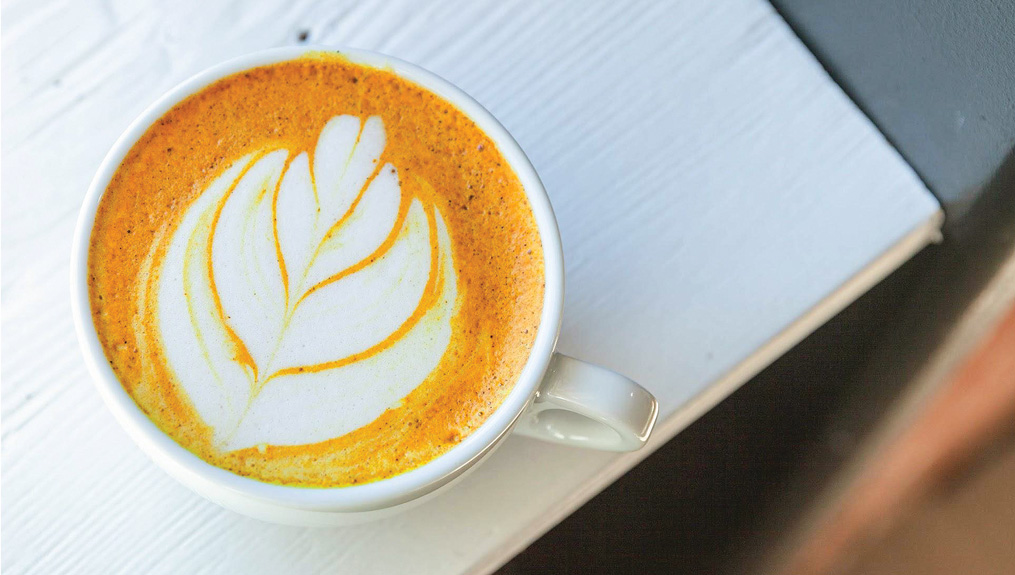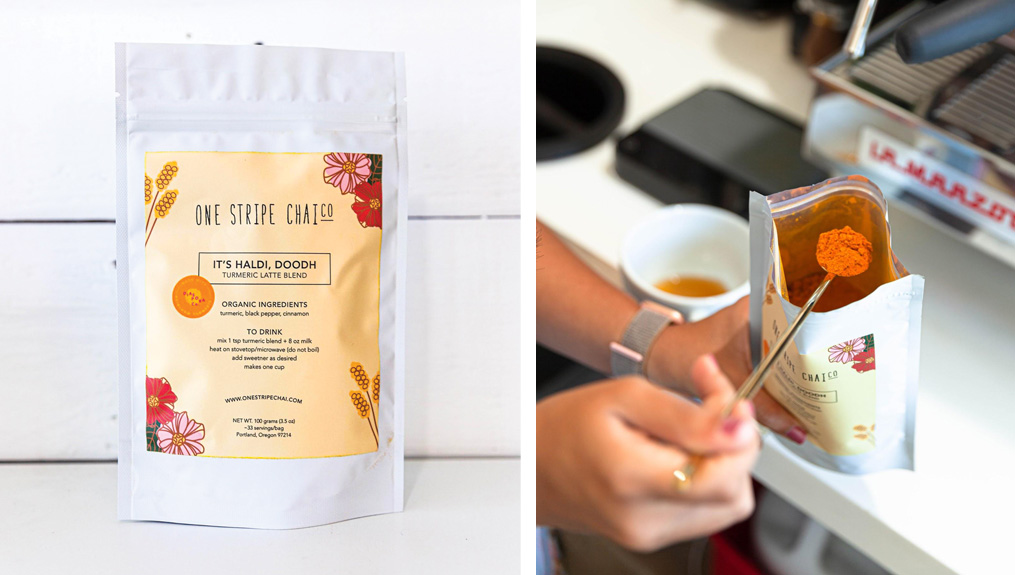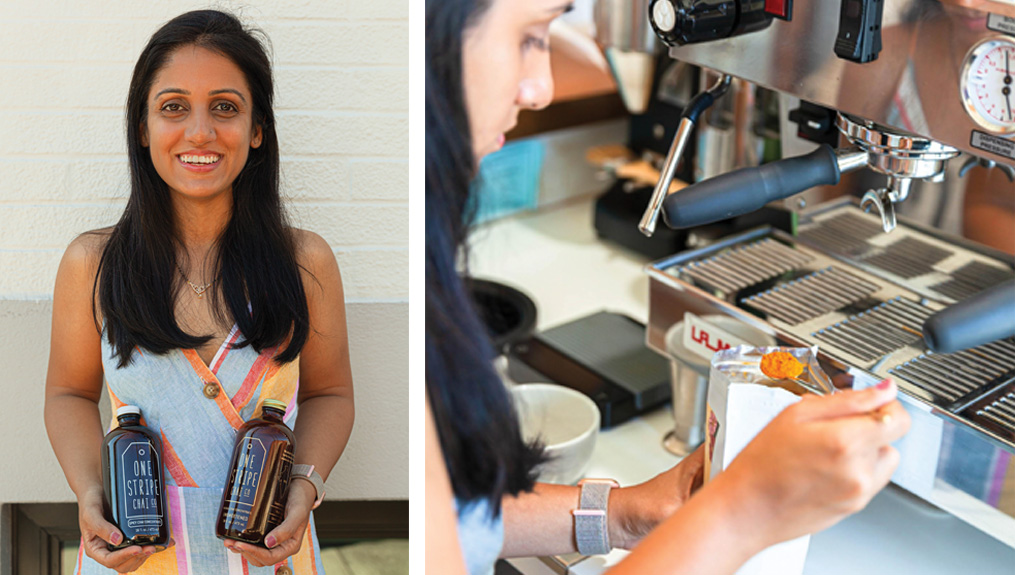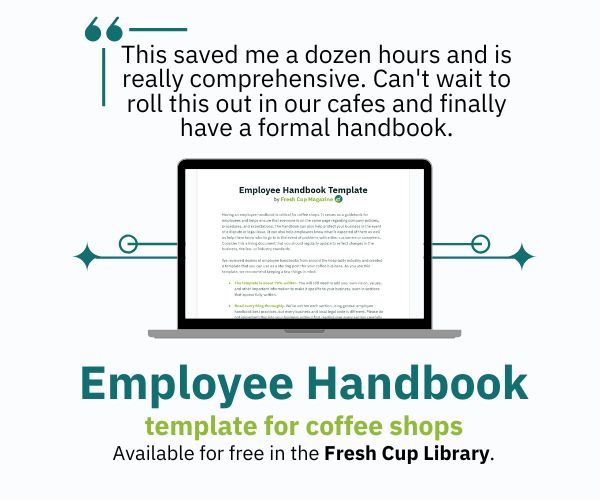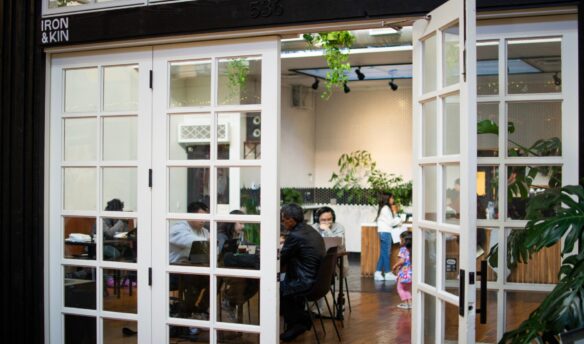Photos by Morgan Glaub
In the past few years, consumer interest for wellness beverages has spiked immensely and turmeric has become a daily go-to superfood for many. One Stripe Chai founder Farah Jesani writes about embracing “haldi doodh,” because, in 2020, representation matters.
2016 was the year of galaxy cakes, cauliflower as rice, and the infamous golden milk latte.
A lot of thoughts went through my mind the first time I saw “golden milk” on a coffee shop menu. The first, accompanied with a full-on eye roll, was, “It’s haldi doodh.” The second was a simple but important question: “People want to pay for this?!”
You see, this new drink on the block looked, smelled, and tasted exactly like the drink my Indian mom forced me to drink growing up as a kid in Atlanta. Unlike chai, it did not evoke memories of warmth, family, or catching up with old friends. Instead, it took me back to all the times I would pray my mom forgot she had heard me cough earlier in the day and I’d get to escape this hot yellow medicine. I had only ever seen this drink through the lens of medicine, and since it didn’t taste like its Western fruit-flavored gummy counterparts, it was low on my list of desirable things in life. Most of my South Asian friends who grew up with the drink had a similar experience. (I say “most” because there’s always that one kid who likes to suck up to the moms.)
For a little background, “haldi doodh” literally translates to “turmeric milk” in Hindi (haldi being the turmeric). In Gujarati, it’s called “haldar varo doodh,” in Telugu it’s “pasupu paalu,” and “holud doodh” in Bengali. The word haldi itself is derived from the Sanskrit word haridra, which means “yellow.” Now, take a moment to contemplate that there’s over 50 other names for turmeric in Sanskrit. A spice so nice they had to name it 50 times!
Unlike chai, which is not an ancient Indian drink (the British brought tea cultivation and consumption to India in the 17th and 18th centuries as a part of their colonial ventures, but that’s a juicy conversation for another day), haldi actually is ancient and native to the Indian subcontinent (we’re talking about evidence of its usage dating back over 4,000 years!).
Producing over 1 million tons of turmeric a year, India is the largest producer, consumer, and exporter of turmeric in the world. What is all this turmeric used for? Haldi is used as a spice in food, as a dye, and, most importantly, as natural medicine. It is widely known for its anti-inflammatory and gut-benefiting properties.
In the past few years, consumer interest for wellness beverages has spiked immensely and turmeric has become a daily go-to superfood for many. U.S. imports of turmeric have increased more than 14 times since 2002 ($2.5 million to over $35 million), making it the top importer of the spice globally. Nowadays, you can find turmeric as an ingredient on anything from popcorn to granola to nut butters.
So, back to seeing this drink that had been my frenemy for as long as I could remember hanging out on a café menu. As my taste buds evolved, haldi doodh actually grew on me over the years. I was using haldi more and more as I learned to cook Indian dishes from my mom. The earthy flavor that I had once abhorred had turned into a flavor I now admired and looked forward to. I often found myself making sure I drank haldi doodh when I felt a cold creeping up or a cough coming on—just as my mom would!
When I launched One Stripe Chai, I knew deep down that haldi doodh was going to be somewhere in our lineup. My inspiration for One Stripe Chai was to bring coffee shops a more delicious and high-quality option for chai. Now that turmeric was becoming so popular, I once again noticed watered-down or low-quality versions of haldi doodh popping up all over the place.
This summer, we proudly launched “It’s Haldi, Doodh” as a punny ode to the drink I grew up with and the reaction I always had when seeing it on menus. Choosing this name was an intentional decision. I knew it could be a bad move since most people don’t speak Hindi and may not know what haldi doodh means, but haldi doodh is inherently Indian, and in 2020, representation matters. If Americans can learn to pronounce gnocchi, schnitzel, and ashwagandha, then they can call this yellow goodness of a drink something more beautiful and expressive than the rather uninspired “golden milk.”
Additionally, I want the name of this blend to create a moment for education. We the people in specialty coffee know that not every patron who walks in the door will know what a traditional macchiato is, and now and then a customer will be severely disappointed when we hand them what seems to be a miniature version of what they expected. This moment is one in which to humbly educate our customer on the product that we are selling. We should be open to educating ourselves and our customers on the tradition and context of all products on our menus.
Besides staying true to our name, we source turmeric from Diaspora Co., a fellow South Asian-owned company. Diaspora was founded by Sana Javeri Kadri with the goal of creating a more equitable and decolonized spice trade. Their turmeric is bright and potent and comes from a fourth-generation farm in the state of Andhra Pradesh in India. We pair this haldi with stone-ground organic black pepper and cinnamon, which we grind fresh in-house before blending. Black pepper enhances the absorption of turmeric’s active ingredient, curcumin, while cinnamon provides a slightly sweet finish to balance out the earthiness of turmeric.
Since launching “It’s Haldi, Doodh,” I’m proud to share that not one person has complained about the name. Instead, I’ve had an outpour of messages from people that appreciate the education and are now replacing golden milk in their vocabulary with haldi doodh! Coffee shops are talking about calling this haldi doodh on their menus, with “golden milk” as a simple tagline. The thought of walking into third-wave coffee shops, in all their single-origin and direct-sourced coffee glory, and seeing “haldi doodh” on the menu gives me goosebumps.
We can choose to either unknowingly consume the foods that are laid before us or we can choose to become intimate with their stories and backgrounds—this is all to say that context and representation matter.

